ANSONIA – Former Ansonia Fire Chief Daniel Mudry was a family man who cared deeply about his community.
Mudry, 54, passed away of pancreatic and liver cancer Monday (Nov. 10). He was chief of the Ansonia Volunteer Fire Department from 2021 to 2023. His colleagues in the department said he always carried a gruff demeanor – but that, beneath it, he was a great guy who would give you the shirt off his back.
“He was a worker bee. Wasn’t afraid to get his hands dirty at all,” said Michael Eheman, who was chief of the department from 2019 to 2021. “And if you needed help with something, he’d be one of the first ones to say ‘Hey, I can come over and give you a hand with that.’”
Deputy Chief Anthony DeLucia said the same, adding that Mudry never missed a meeting where the department’s interests were at stake.
“You call him, you’re stuck outside on a road somewhere, he’d come and help you,” DeLucia said.
Mudry’s friends remember him as a talented woodworker who spent months on custom-made gifts he built for outgoing chiefs. Those gifts included scale models of fire trucks for chiefs Ed Adamowski and Scott Trembley, and a replica of the Webster Hose firehouse facade for Eheman.
Eheman said the facade was indistinguishable from the real thing. It now stands in his living room and greets visitors when they walk in.
“It’s an exact duplicate. If you saw the front of the firehouse, the Webster Hose in Ansonia, and you saw this, you knew exactly what it was, right down to the way the lights were and everything,” he said.
“He was a master craftsman,” Eheman said.
Mudry’s obsession with using his hands – and getting the details right – started early. That’s according to Mayor David Cassetti, who met Mudry when Mudry was just a child. Cassetti was then a contractor doing sewer work on Mudry’s street, and Mudry would come out of the house to watch him work, Cassetti said.
“He was inquisitive. He wanted to know, and I used to put him in the hole with me when we would put pipe together and stuff like that, and he loved that,” Cassetti said. “We used to talk about it right up until the last time I saw him.”
Cassetti said Mudry asked him questions as a kid – Why not put a pipe in this way? Why not do it that way? – and that he was a jokester from an early age.
Mudry would go on to join the Fountain Hose company as a teenager, where he served under Chief Jerome Fainer.
Current Ansonia Fire Chief Jay Fainer – Jerome Fainer’s son – said Mudry and his father loved teasing each other.
“They used to go back and forth, because my dad was a past captain and Danny was a new guy,” Fainer said. “So my dad always used to give him a hard time. He’d show him his captain’s badge and say ‘Oh, you’re never gonna get one of these.’ And I remember when Danny got his, he used to rub it in my dad’s face. ‘He told me I’d never get one, and now I got one.’”
He said Mudry shaped up to be a strong chief once he took the office in 2021. He was a delegator of tasks – willing to take the lead, but equally willing to let others take charge when they knew more about a situation.
“One of Danny’s strongest points was he knew what he didn’t know, and he used to take advice from those who did. He knew what his weaknesses were, but he knew who was strong in those categories,” Fainer said.
Mudry never let ego get the best of him, according to Fainer – and he never took himself too seriously, either.
“You’d see him in full turnout gear and wearing his Elmer Fudd hat. He loved that hat, he wore it all the time,” Fainer said.
Among the things Mudry did take seriously was the fire department’s image. He always kept his vehicle pristine when he took it places, according to DeLucia.
“He was meticulous with his trucks that he kept, the chiefs’ vehicles. Never dirty. Spotless. Clean. He was obsessed,” DeLucia said.
Mudry’s eye for detail always impressed his peers. Eheman and Fainer both said Mudry was skilled enough at woodworking that he could have made a living off of it. However, Eheman said Mudry never wanted to go that route.
“He did it for just the fun and the love of it,” Eheman said. “If it got to be a job, I think that’s one thing he said, ‘I don’t want to do it like that.’”
He said Mudry would turn down offers to commission him for projects, because he wanted to build things he could give to people as gifts.
At the end of his tenure in Ansonia, Mudry moved to Seymour and joined the Seymour Fire Department. After he was diagnosed with cancer earlier this year, fundraiser dinners were held for him in Seymour and Shelton.
Eheman said he had never seen Mudry in brighter spirits than at one of those dinners.
“I said, Dan, you’re nicer now and smiling more now than you were before you were sick. And he kind of laughed at that,” Eheman said. “Everyone liked to break Danny’s chops because sometimes he could be kind of a little grumpy.”
Mudry also documented his battle against cancer on Facebook, where he gave status updates and talked about his desire to get back to work.
Right up until the end, Mudry maintained his sense of humor, said Fainer.
“One of the last times I ran into him, I had the chief’s car, and he looked at it, and he said, ‘At least you’re keeping it clean,’” Fainer said.
Departments Issue Statements
Fire departments and elected officials put out statements this week mourning Mudry’s passing.
“Chief Mudry faithfully served the department for many years in the roles of Captain, Assistant Chief, and ultimately as Chief of the Department. His leadership, dedication, and service to the citizens of Ansonia will never be forgotten,” read a post from the Ansonia Fire Department.
“Dan proudly served with the Great Hill Hose Company. He joined the Seymour Fire Department in August of 2024 after a long and distinguished career with the Ansonia Fire Department, where he served as Chief of the Department,” the Seymour Fire Department’s statement read.
“Mayor Cassetti is deeply saddened by the passing this afternoon of past Fire Chief, Dan Mudry, who lost his courageous battle with cancer,” said a post from the City of Ansonia Facebook page.
“Dan’s bravery and dedication to serving our community will always be remembered. Our thoughts and prayers are with his family and friends during this difficult time,” read a post from the office of Seymour First Selectwoman Annmarie Drugonis.
Mudry leaves behind a wife, Dianne, and a son, Storm. This story will be updated once details regarding services are released.

 203-877-1377
203-877-1377




 Service Areas
Service Areas























